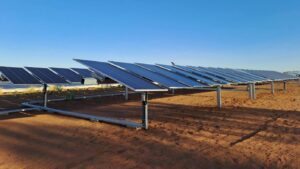PRESS RELEASE
The National Energy Guarantee can provide a mechanism for cutting greenhouse gas emissions, so long as a more ambitious target is adopted.
On 10 August 2018, the Council of Australian Government’s Energy Council will meet to decide whether to approve of the Final Detail Design of the National Energy Guarantee (NEG). The Australian Academy of Technology and Engineering has long advocated for technology-neutral policies that can address the electricity trilemma – providing reliable and secure electricity, at an affordable cost to the consumer, while reducing and eventually eliminating greenhouse gas emissions. So, does the NEG help Australia achieve these aims?
Reliability and Security
The NEG’s Reliability Guarantee provides a functional, although complex, solution to manage the risk of a predicted shortfall in generation in the National Electricity Market (NEM). The Academy considers it unlikely that the mechanism will be triggered in the foreseeable future. However, it may provide a useful failsafe mechanism to maintain the NEM’s reliability if a more ambitious emissions reduction trajectory is attempted or legacy power stations close earlier than anticipated. The NEG does not directly impact the security of the NEM.
Emissions
The Academy considers that a transparent, market-based, and whole-of-economy emissions reduction mechanism such as a carbon price or an emissions trading scheme would be the most efficient and effective option for climate change mitigation. However, the NEG’s Emissions Guarantee could be a workable mechanism to drive emission reductions if a more ambitious emissions reduction target is adopted.
The proposed emissions reduction target for the NEG lacks ambition and will almost be achieved before the mechanism is in place. As a result the NEG is expected to slow investment in demand and supply-side low-emissions solutions in the electricity sector. This would limit the potential for both emissions and cost reductions, making the transition to a lower emissions electricity sector costlier and more disruptive in the long run. The proposed target will also place a greater burden (and cost) on other sectors of the economy (agriculture, transport and manufacturing industries) to reduce emissions.
Affordability
The Energy Security Board’s modelling shows significant cost reductions due to new renewable energy projects enabled by the Renewable Energy Target, and a small reduction due to the NEG. However, because the modelling detail has not been released, ATSE is unable to comment on the modelling results. ATSE supports the call by Australian energy researchers for the full details of the modelling to be released so that its assumptions and findings can be independently examined.
What next?
The NEG only covers emissions from electricity generation in the NEM. It does not consider emissions from the Western Australian or Northern Territory electricity systems, let alone the other sources of Australian emissions. Australia urgently needs an economy wide strategy that provides a trajectory for emissions reduction and policies that will ensure that Australia can stay within the carbon budget implicit in the Paris Agreement.
Thanks to advances in technology, the electricity sector is transitioning from a centralised and fossil fuel-dominated system to a decentralised, flexible and low-carbon system with a diverse mix of electricity generation and storage resources. Australian governments can guide and accelerate this transition for the nation’s benefit, however this requires a stable policy to support the investments needed to replace the National Electricity Market’s ageing fossil-fuelled generation assets with affordable, reliable and low- to zero-emission, electricity sources.
The NEG provides a viable way of achieving this in the current political environment but in its present form it risks being costly and ineffective. To ensure that it can address all elements of the trilemma, the Academy recommends that the NEG’s emissions reduction trajectory be informed by the independent advice of the Climate Change Authority, and subject to regular reviews that allow the ambition of the emissions reduction target to be increased if the evidence supports it.









